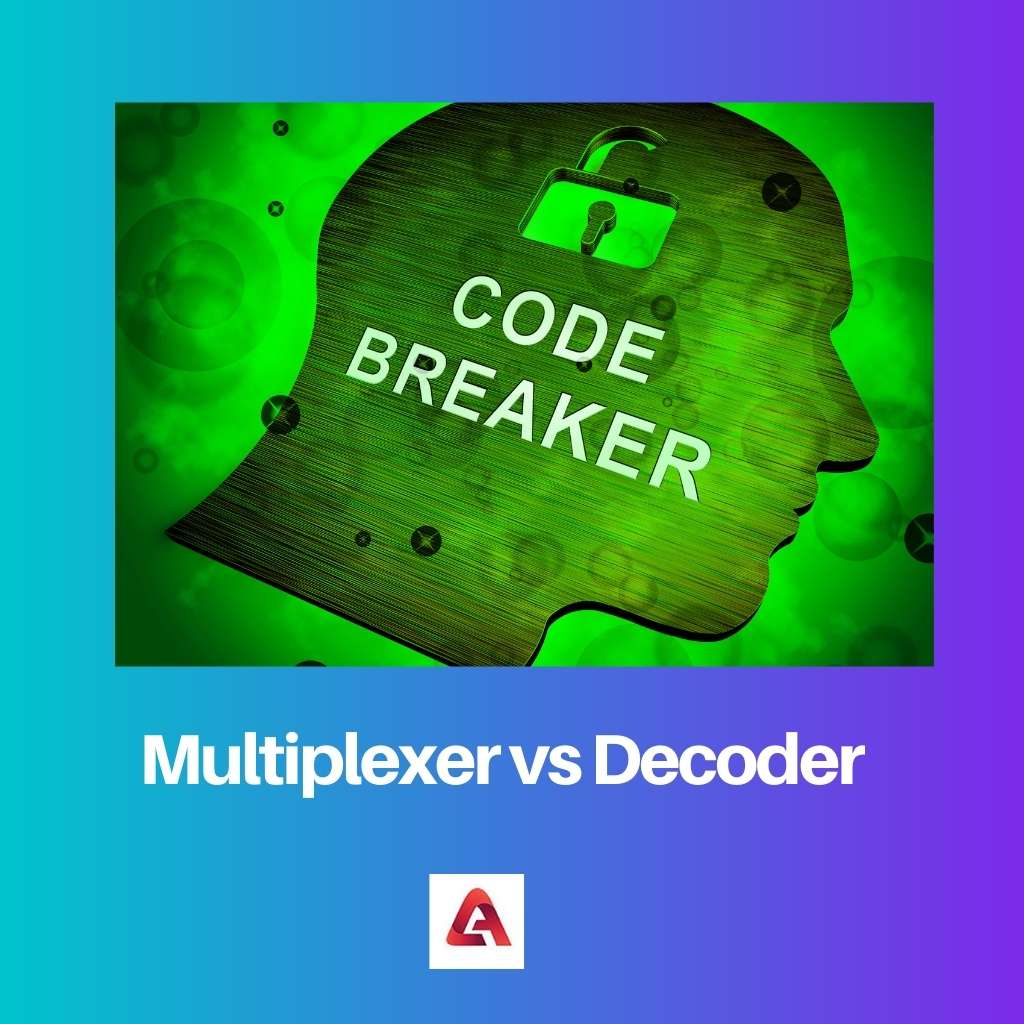Today, the progress of signal systems has greatly grown in many communication systems. The key contributions of multiplexer and decoder devices can be attributed to the basic signal transfers.
Both the multiplexer and the decoder operate together to generate signal and data output for various communication and operating channels. Though multiplexers and decoders perform almost identical functions, they differ for a variety of reasons.
Key Takeaways
- A multiplexer combines multiple input signals into one output signal, whereas a decoder converts an encoded input signal into a specific output signal.
- Multiplexers find applications in data routing and communication systems, while decoders are used for signal processing and recovery.
- Multiplexers require fewer output lines than decoders for the same number of input lines, leading to more compact designs.
Multiplexer vs Decoder
A multiplexer, also known as a MUX, is a device that selects one of several input signals and transmits it to a single output line. A decoder is a device that takes an n-bit binary input and activates output lines. A decoder activates one of several output lines based on a binary input.

A multiplexer is a device that selects one of several analogs or digital input signals and transmits the selected input into a single medium. Data Selector is another name for Multiplexer.
MUX permits several inputs but only allows one data output. It can have several inputs but only a single output.
A decoder is a combinational logic circuit with numerous inputs and outputs. To create the exact code, the decoder normally places logic 1 at one of its outputs while decoding.
There are three types of decoders based on the number of inputs and the coded output: line Decoders, 2 to 4 binary decoders, and cascade Decoders.
Comparison Table
| Parameters of Comparison | Multiplexer | Decoder |
|---|---|---|
| Main Function | Transmit data | Interprets coded data |
| Number of Inputs | several inputs and only one data output | n input binary code and convert into outputs |
| Working Principle | Combines multiple inputs into a single data stream | Converts coded input to coded outputs |
| Application | Data routing and waveform generation | Decimal to BCD encoder |
| Coding | Unary code into binary code | Binary code into unary |
What is Multiplexer?
A multiplexer is a device that chooses signals and transmits them into a single media. A multiplexer with 2n inputs has n select lines that determine which input line is transmitted to the output.
A multiplexer is an acronym for MUX.
The Multiplexer is a switch having several inputs and a single output. Multiple signals share the same device or transmission conductor.
Analog or digital signals that are multiplexed across many communication channels in telecommunications. These are high-speed signals with a single output.
Multiplexing is the process of delivering many signals via a single media. It is a technology exhibited at the OSI model’s physical layer.
Multiplexing technology includes FDM, a.k.a. Frequency Division Multiplexing, WDM, i.e., Wavelength Division Multiplexing, etc.
A multiplexer is graphically represented by an isosceles trapezoid, with the input pins on the longer parallel side and the output pins on the shorter parallel side.
A multiplexer and a demultiplexer are frequently combined into a single piece of equipment called a multiplexer, due to the fact that most communications systems broadcast in both directions, both circuit elements are required at both ends of a transmission link.
A multiplexer is a combinational circuit with two or more input lines and one output line. Simply described, a multiplexer is a combinational circuit with numerous inputs and a single output.
Binary data is received from the input lines and directed to the output lines.
What is Decoder?
A decoder’s general structure also contains an enable input. When set to logic HIGH, the coded result is displayed based on the binary data input.
Decoders are classified according to the number of inputs and the coded output.
The line decoder is a typical type of decoder that accepts an n-digit binary integer and decodes it into 2n data lines. The 1-to-2 line decoder is the most basic.
2 to 4 binary decoder – This decoder has two binary inputs and four coded outputs.
Binary decoders that may be cascaded together to produce a bigger decoder circuit are known as cascading decoders. By cascading two 2 input decoders, four input decoders can be produced.
Similarly, a 4 to 16 binary decoder can be built by cascading two 3 to 8 decoders.
Decoder circuits are used in applications such as seven-segment displays, multiplexing, and address decoding in-memory systems to convert binary data. Using AND and NAND gates, the decoders system accepts many inputs and produces various outputs.
The decoder can also be located in the central processing unit’s control unit. It is also used to decode program instructions and orders in order to activate the relevant control line, allowing the CPU’s ALU to perform various operations.
Decoders are also used to generate Boolean functions by employing AND and NAND gates. The internal circuit for both the decoder and the DEMUX is the same.
Decoders are used for high-performance memory decoding and data routing with low transmission delays, among other things. Decoders are now employed in networking and telecommunication systems.
Main Differences Between Multiplexer and Decoder
- The main function of a multiplexer is to transmit data, and the main function of a decoder is to interpret coded data.
- The MUX accepts many inputs but only allows one data output, whereas the decoder takes n input binary codes and converts them into corresponding outputs.
- The working principle of Multiplexer is to combine multiple inputs, and the working principle of a decoder is to convert coded input.
- Multiplexers are employed in data routing and waveform production, and decoders are utilized in decimal to BCD encoders.
- The multiplexer translates unary code to binary code, whereas the decoder turns binary code to unary code.



